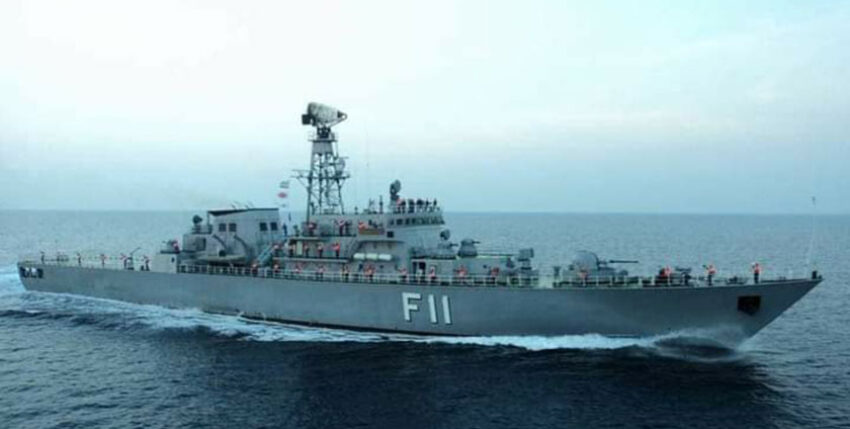The navy of the Republic of Myanmar, which is geographically located between India, Bangladesh, Thailand and the People's Republic of China, has been undergoing an extensive fleet renewal programme for several years, which has so far gone almost unnoticed by the Western media.
The fleet of the Myanmar Navy is made up of a colourful mix of different units from the USA, Denmark, the former Yugoslavia, India and the People's Republic of China. Between 1998 and 2002, CAMC Engineering from China laid the foundations for today's naval shipbuilding capacity in Myanmar by modernising the existing facilities and building a modern shipyard complex at the Naval Dockyard Headquarters in Thanlyin (not far from Yangon). In recent years, there has been greater political rapprochement with India, which has also manifested itself in greater cooperation between the navies and shipbuilding industries of the two countries. This cooperation reached its peak on 24 December 2020, when the Indian Navy transferred one of its KILO-class submarines to the Myanmar Navy.
With the commissioning of the 77 metre long and 1100 tonne displacement corvette UMS ANAWRAHTA (ID 771) in 2001, the first larger naval unit finally assembled in Thanlyin was put into service. However, the installed hull segments were still manufactured in China. In addition to the 76-millimetre on-board cannon from Oto Melara, most of the weapons and on-board systems, such as the RBU-1200 depth charge launcher or the C-802 anti-ship missile, come from Russia and China. The BAYINT NAUNG (772), another ANAWRAHTA-class ship, followed in 2003, before the corvette programme was completed with the TABINSHWEHTI (773) in 2016. The TABINSHWEHTI is visually very different from its older sister ships thanks to measures to reduce the radar cross-section.

Frigates
In 2010, Myanmar was able to commission the 108 metre long and 2500 tonne displacement UMS AUNG ZEYA (F 11), the first frigate of its own construction, which, like the previous corvettes, was built with massive Chinese support. The equipment for the frigate, which is powered by a combined diesel and diesel system (CODAD), again comes largely from Russia, China and India. Before continuing its own newbuilding programme, Myanmar received two decommissioned Type 053 H1 frigates (JIANGHU-II class) from China as maritime support in April 2012. With the KYAN SITTA (F 12) and the SIN PHYU SHIN (F 14), two further 108 metre long frigates built in Myanmar were commissioned in 2014 and 2015, which look like a scaled-down version of the numerous Chinese Type 54A frigates. The domestic frigate construction programme then paused for several years.
Satellite images of the Thanlyin Naval Shipyard published on Google Earth in early 2021 show several smaller units in various stages of construction as well as the unfinished hull of a larger ship. According to information on the Myanmar Defence Review website, a frigate with a length of 135 metres and a displacement of 4,000 tonnes is currently being built. It is said to be very similar to the Indian SHIVALIK-class frigates and will be equipped with a 16-cell VLS vertical take-off system and a combined diesel-or-gas (CODOG) propulsion system.
In 2019, CAMC Engineering signed a contract worth USD 211 million with the Myanmar Navy to build a dry dock for ships up to 40,000 tonnes. Currently, Myanmar Naval Dockyard uses a ship lift for launching newbuildings, which only has a limited capacity. Once the new dry dock is in operation, the Myanmar Navy should be able to build even larger units.

Author: Stefan Ulsamer is a freelance journalist specialising in marine technology.










